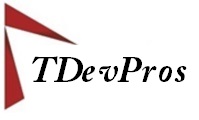Catch the Wind: Manage Your Career Strategy

Introduction
When I first started working in Biotechnology, I faced a steep learning curve—but it quickly became a deep-rooted passion. It was intellectually challenging and, to this day, remains my favorite industry to support. I had the privilege of working with brilliant scientists—people dedicated to changing the world, tackling one disease at a time.
In one role, I hired fresh graduates stepping into the lab for the first time. In another, I recruited Principal Scientists and Scientific Leaders, working across all career levels. Through it all, I found myself in the role of a trusted advisor—listening to dreams, aspirations, and career goals. I supported talent development for both individuals and my company clients, often acting as a coach long before I formally embraced the profession.
After twenty years of these experiences, I find myself writing about career development—offering my insights and reflections in the hope that you, too, can chart a successful and fulfilling career path. And what better metaphor for this journey than a kite? Whether you’re just launching, navigating unpredictable winds, or soaring to new heights, the principles of flight apply to every stage of your professional life.
This series explores how to manage your career through the lens of flight, with insights on how to harness the winds, adapt to change, and keep your kite aloft. I hope these ideas help you find success and fulfillment in your own journey.
Version 1: Early Career Development – Learning to Launch
Starting your career is a lot like learning to fly a kite. At first, you’re figuring out how to hold the string, where the wind is blowing, and how much effort it takes to get the kite off the ground. You might be running full speed ahead, hoping the wind catches, or struggling with a tangled mess of string and expectations.
Like a kite, your early career success depends on the conditions around you—mentors, opportunities, and even a little luck. The key is learning how to navigate these forces. Coaching at this stage helps with understanding wind patterns (the workplace culture), adjusting the tail (building new skills), and ensuring your string is strong enough (resilience and adaptability).
Not every launch is perfect, but with practice, you’ll find the right balance of effort and patience to keep your career soaring.
Version 2: Middle Management – Navigating the Winds
You’ve launched your career, and now you’re in middle management, where the real art of flying begins. No longer just trying to keep the kite in the air, you’re now steering it, handling unexpected gusts, and ensuring it doesn’t crash into others flying alongside you.
At this stage, leadership coaching helps you adjust your grip—knowing when to hold firm and when to give some slack. The higher your kite goes, the more unpredictable the winds can be. Office politics, competing priorities, and team dynamics all create turbulence, and it takes skill to keep your career aloft without getting tangled in unnecessary conflicts.
Mastering the winds of middle management means knowing when to pivot, when to let your team take the lead, and how to keep your own career aspirations aligned with the bigger picture. The key is to stay aware, make strategic adjustments, and remember that control isn’t about force—it’s about finesse.
Version 3: Executive Level – Reaching New Heights
At the executive level, you’re no longer just flying your own kite—you’re influencing the entire sky. The perspective is different up here; you’re responsible for creating favorable conditions for others, making sure the airspace is clear, and ensuring that new kites can rise alongside you.
Leadership at this stage requires not only vision but also the wisdom to know that success isn’t about keeping the kite tethered tightly. True leadership means knowing when to let go of the string just enough for innovation and new ideas to take flight. Coaching at this level focuses on legacy, sustainability, and creating an environment where others can soar.
The higher your kite, the more visible you are. People look to you for guidance, and your movements influence theirs. Executives must navigate shifting market winds, balance company goals with people’s needs, and ensure that they aren’t flying too high without a strong foundation below.
A Career Well-Managed
A well-managed career, like a well-flown kite, leaves a lasting impression—one that inspires others to take flight. As you reflect on your own professional journey, consider the ways you can take control of your trajectory, adjust to changing winds, and support those flying alongside you. Whether you are just launching, navigating, or leading at the highest levels, a thoughtful and strategic approach can make all the difference.
If you’re seeking guidance in steering your career with intention, working with a career coach can provide invaluable insights. Coaching helps ensure that your string remains strong, your flight remains steady, and that you’re soaring in the right direction. No matter where you are in your journey, the sky is full of possibilities—so go ahead, take flight!


Recent Comments